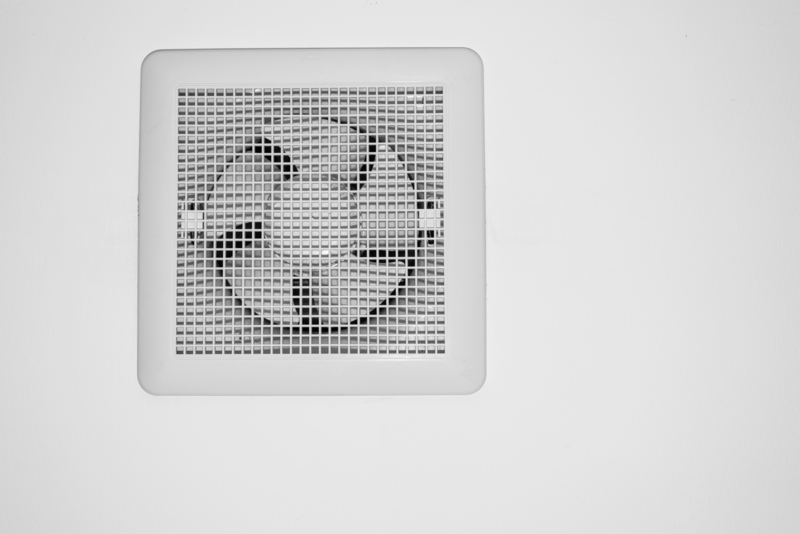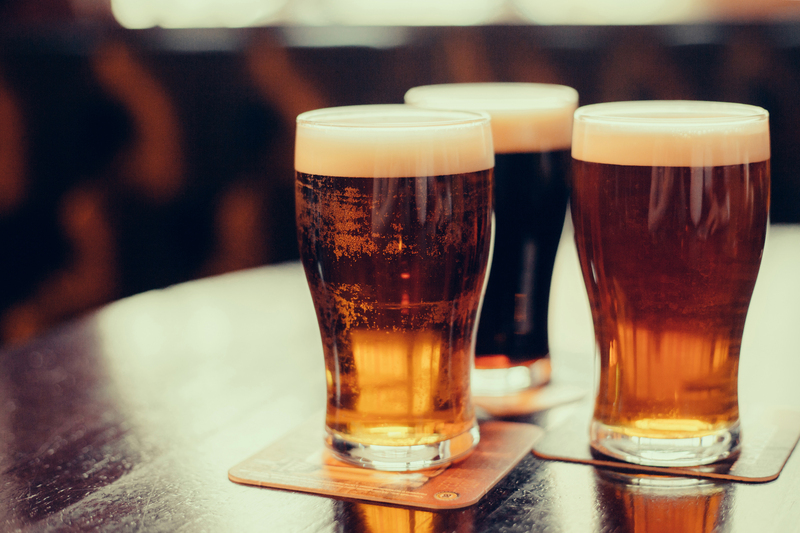Effortless Tricks to Clean Burnt-on Stovetop Mess
Posted on 04/10/2025
Effortless Tricks to Clean Burnt-on Stovetop Mess
Every home chef has faced this dilemma: you finish cooking a delicious meal, only to discover stubborn, burnt-on messes on your stovetop. Not only are these lingering stains an eyesore, but they can also cause lasting damage and even affect your appliance's performance. Luckily, cleaning a burnt-on stovetop mess doesn't have to be a chore. In this comprehensive guide, we reveal effortless tricks and tips to restore shine to your cooking surface, whether you have a glass, ceramic, or gas stovetop. Let's dive into methods that truly make spotless results attainable!

Why It's Crucial to Clean Burnt Stovetop Messes Quickly
- Prolong Appliance Lifespan: Burnt-on residue can corrode surfaces over time, leading to irreversible damage.
- Improve Cooking Efficiency: Clean burners ensure consistent heat distribution, saving energy and cooking time.
- Maintain Kitchen Hygiene: Food debris attracts pests and harbors bacteria, making prompt cleaning vital for health.
- Enhance Kitchen Appearance: A clean stovetop instantly elevates your kitchen's aesthetic appeal.
Ready to tackle that tough, baked-on grime? Explore these effective, effortless tricks to clean burnt-on stovetop mess for every type of stove.
General Preparation: Gathering Your Cleaning Arsenal
Before diving into specific cleaning techniques for stubborn stovetop spills, gather the following essential cleaning supplies:
- Baking soda
- White vinegar
- Lemon juice
- Dish soap (preferably degreasing)
- Non-abrasive scrubbing pads or sponges
- Microfiber cloths
- Razor blade scraper (for glass stovetops only)
- Plastic spatula
- Paper towels
- Rubber gloves (to protect your hands)
Tip: Always allow the stovetop to cool completely before cleaning to prevent burns or cracks.
1. Effortless Tricks for Cleaning Burnt-on Stains on Glass and Ceramic Stovetops
Baking Soda and Vinegar Magic
Combining baking soda's gentle abrasiveness with vinegar's natural acidity creates a fizzing reaction that lifts even the toughest burnt-on messes from your glass or ceramic stovetop.
- Sprinkle baking soda: Liberally dust baking soda over the stained area.
- Spray with vinegar: Fill a spray bottle with white vinegar and spritz over the baking soda. The mixture will bubble up as it starts to work on the grime.
- Wait and wipe: Let the solution sit for 15-20 minutes to break down the residue.
- Gently scrub: Using a damp, non-abrasive sponge, gently scrub away loosened debris. For stubborn spots, reapply the mixture and let it sit longer.
- Wipe clean: Use a microfiber cloth dampened with clean water to wipe away the remaining residue. Polish with a dry cloth for a sparkling finish.
Bonus Tip: For extra-tough burnt-on stains, make a thick baking soda paste and let it rest overnight before scrubbing. This is among the most effective tricks for cleaning burnt-on glass cooktops.
Using a Razor Blade Scraper (Only for Glass & Smooth Ceramic Surfaces)
For particularly stubborn, burnt-on patches that resist scrubbing, a razor blade scraper offers a gentle yet effective solution.
- Hold the blade flat at a 45-degree angle against the surface.
- Carefully scrape under the edge of the burnt residue, applying light pressure to avoid scratching the glass.
- Wipe away loosened bits and follow up with a baking soda-vinegar clean.
Important: Never use a razor blade on textured or enamel stovetops, as this can cause permanent damage.
2. Effortless Tricks to Clean Burnt-on Mess from Gas Stovetops
Removing and Cleaning Grates and Burner Caps
- Remove grates and burner caps, soaking them in hot, soapy water for 20-30 minutes.
- For tougher stains, add a few tablespoons of baking soda or a squirt of vinegar to the soak.
- Scrub surfaces with a non-abrasive pad or an old toothbrush.
- Dry thoroughly before placing them back.
Tackling the Base Surface
Food and grease can accumulate around burners, creating hardened, burnt-on messes.
- Wipe loose crumbs and debris with a damp cloth.
- Apply a baking soda paste (mixing baking soda with a bit of water) onto burnt areas.
- Allow the paste to sit for at least 15 minutes.
- Use a plastic spatula or gentle scrubber to lift away residue--avoid metal tools to prevent scratches.
- Rinse with a microfiber cloth and dry well.
For extra cleaning power, follow up with a spray of diluted white vinegar and a soft wipe.
3. Quick Clean-Ups: Lemon Juice and Salt for Burnt-on Stovetop Grime
Lemon juice is a powerful natural degreaser, and salt provides gentle abrasion. This duo is perfect for both light and moderate scorches.
- Cut a lemon in half and pour coarse salt on the exposed side.
- Use the lemon as a "scrubber," rubbing it over the stubborn spot in circular motions.
- Let the mixture sit for 10 minutes to break down the gunk, then wipe clean with a damp cloth.
Why it works: Lemon's acidity cuts through grease, while salt loosens sticky, burnt bits quickly and effortlessly.
4. Effortless DIY Degreaser Spray
- Mix 1 part vinegar, 1 part water, and a few drops of dish soap in a spray bottle.
- Spray generously onto burnt-on stovetop messes.
- Allow the solution to penetrate grime for several minutes.
- Wipe and buff with a microfiber cloth for a streak-free shine.
Tip: Add a few drops of essential oil (like lemon or orange) for a pleasant fragrance and extra grease-cutting power.
5. Effortless Tricks to Clean Burnt-on Mess with Commercial Cleaners
- Look for stovetop cleaners specifically designed for your cooktop material--glass, ceramic, or enamel.
- Apply according to package instructions, allowing the cleaner to sit wherever possible to loosen trapped food and carbonized marks.
- Use non-abrasive pads or specialty sponges to avoid scratching.
- Finish by rinsing thoroughly and buffing dry.
Remember: Always spot-test new products in an inconspicuous area, especially with glass and induction stovetops.
6. Preventing Burnt-on Stovetop Messes in the Future
- Wipe spills immediately after the stovetop cools (even minor splatters can harden over time).
- Use a splatter guard or lid when frying or simmering sauces.
- Clean grates, burner caps, and drip pans weekly for gas stoves.
- Regularly deep-clean your stovetop using the above methods--even if it doesn't look dirty, invisible grease builds up!
Bonus: Apply a thin layer of car wax or stovetop polish to glass or ceramic surfaces to prevent food from sticking. Always check the manufacturer's warranty before trying this hack.
FAQ: Effortless Tricks for Cleaning Burnt-on Stovetop Messes
Can I use steel wool to clean a burnt stovetop?
No, avoid steel wool on most stovetops, as it scratches glass, ceramic, and enamel finishes. Instead, opt for non-abrasive sponges or specialty pads made for stovetops.
How often should I deep-clean my stovetop?
Once a week is ideal for deep cleaning. Quick wipe-downs after each use will make this job easier and prevent buildup.
What if burnt-on residue won't come off?
Try repeating the baking soda-vinegar technique, allowing a longer soak time. For glass stovetops, use a razor scraper carefully. In severe cases, invest in a professional stovetop cleaner.
Are there any natural alternatives to commercial cleaners?
Yes! Vinegar, baking soda, and lemon juice are all excellent natural alternatives to harsh chemical cleaners. They're effective for handling burnt-on messes on your stovetop and are safe for most surfaces.
Effortless Tricks for Different Stovetop Materials
Glass & Ceramic Stovetops
- Use only gentle, scratch-free tools (e.g., microfiber cloths, sponges)
- Never use harsh chemicals like ammonia or bleach
- Finish with a specialty polish for lasting shine
Gas Stovetops
- Remove grates and caps for separate cleaning
- Wipe base surface using baking soda pastes or degreaser sprays
- Check and unclog burner holes with a toothpick as needed
Induction Stovetops
- Handle glass-like surfaces as described above
- Never immerse electrical components in water
- Wipe with a damp, not soaking, microfiber cloth

Extra Insider Tips for an Effortless Clean
- Pre-Soak Tough Messes: Place a wet towel over dried stains and let it sit for 30 minutes to soften stubborn grime prior to scrubbing.
- Use Dishwasher Tablets: Dissolve one in hot water and use it as a scrub for metal parts (like burner grates) with burnt-on residue.
- Avoid Abrasive Powders: Many commercial cleaners marketed as "scouring" products can dull or scratch your stove's finish.
Conclusion: A Sparkling Stovetop Awaits
Maintaining a spotless cooking surface doesn't require harsh chemicals or backbreaking scrubbing. With the effortless tricks to clean burnt-on stovetop mess listed above, you'll tackle everything from light scorches to stubborn, baked-on grime--quickly and confidently. Whether you cook daily or sparingly, these easy, affordable solutions will save time, protect your investment, and keep your kitchen looking--and smelling--fresh.
Incorporate these expert strategies into your regular cleaning routine and enjoy the gleaming results every day. Happy cooking--and even happier cleaning!




